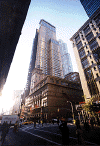 |
New York Architecture Images- Midtown Carnegie Hall |
||||||||||
|
architect |
William B. Tuthill with Richard Morris Hunt and Dankmar Adler as consultants (hall); Henry J Hardenbergh (tower additions 1894); James Stewart Polshek & Partners (hall renovation); Cesar Pelli & Associates (tower) | ||||||||||
|
location |
156 W57, at Seventh Ave. | ||||||||||
|
date |
Erected: 1891 (hall); 1986 (hall renovation); 1990 (tower) | ||||||||||
|
style |
Renaissance Revival | ||||||||||
|
construction |
brick | ||||||||||
|
type |
Theater | ||||||||||
|
|
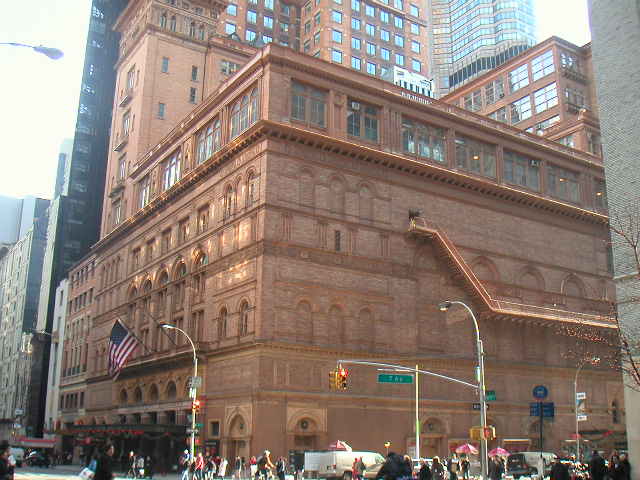 |
||||||||||
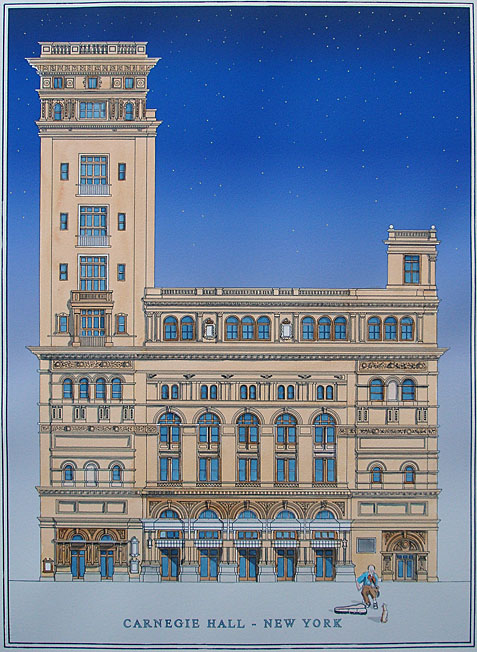 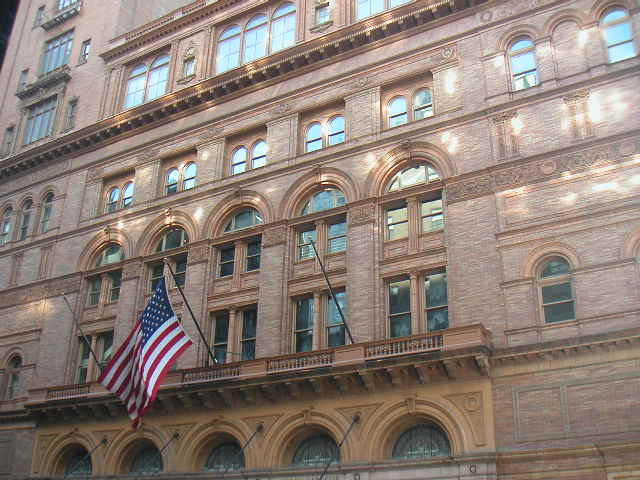 |
|||||||||||
| Rendering copyright Simon Fieldhouse. Click here for a Simon Fieldhouse gallery. | |||||||||||
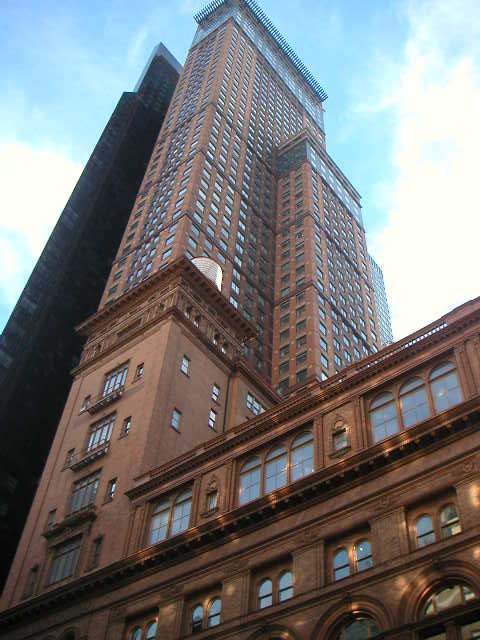 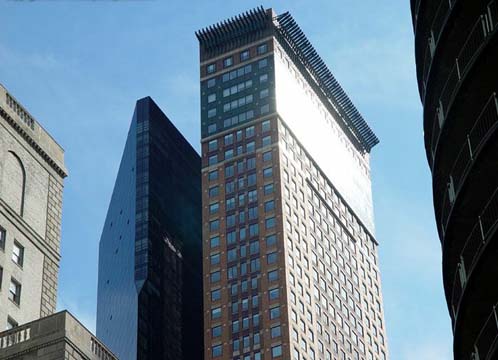 |
|||||||||||
|
|
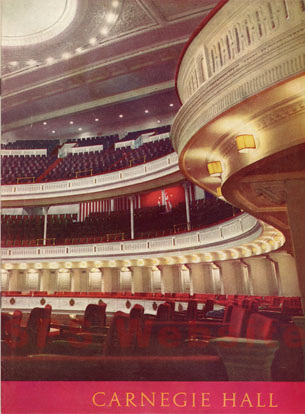 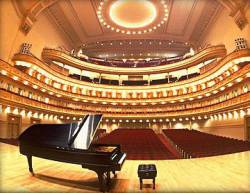 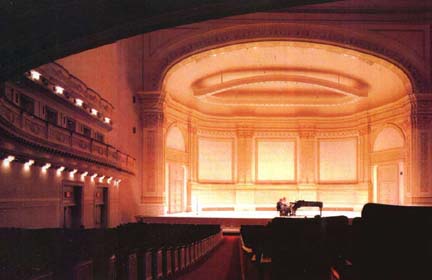 |
||||||||||
|
[thanks to
Medieval NewYork] By Timothy B. Stevens (tstevens@murray.fordham.edu)
Background Information
This building was constructed a few years before the steel era which led to the construction of the sky scrapers that crowd the New York sky line today. The method of building this hall was strange because it is made up of three buildings. There is the main hall which the show was actually performed. The second building, also known as the "lateral" building, contained studios, the recital hall and the chapter room, which was meant to be the meeting place for different organizations. The third building is more confusing than the other two. It is in between the other two buildings. In 1894, the building was extended to
seventh avenue from fifty-sixth street. and in 1896, the roof came off
and a studio floor was added on, while a ten story tower was constructed
on the lateral building. This extra construction made the building
difficult to navigate. Tuthill built Carnegie Hall so solidly that it
was meant to stand all of time. The First Performer Opening Night Scares
Opening Night was really on May 5. 1891.
The performer was not a no-name piano player. He was and is still one of
the greatest composer in the history of the world. The performer was
Peter Ilyich Tchaikovsky. The concert hall was jammed full of New
Yorkers. Tuthill was worried about this he did not believe that the
steal columns could withhold the mass weight of all of the people. He
left during the performance so he could examine the blueprints of the
building. Carnegie Hall remained standing that night and is still
standing today. It is still one of the most important structures in all
of New York.
Bibliography |
|||||||||||
|
"In the spring of 1887, Walter Damrosch set sail from New York City to his native Germany for a summer of study with the renowned conductor Hans von Bulow. It was a busman's holiday of sorts for the twenty-five-year-old musician, who in the two years since the death of his father, Leopold Damrosch, founder of the Oratorio Society and the New York Symphony, had become known to music lovers in New York as the baton-wielding figure at the Metropolitan Opera House. Little did the young conductor guess that the summer was also to be the prelude to his father's fondest dream: a great concert hall for New York City. "As fortune would have it, Andrew Carnegie, czar of America's steel industry, was also aboard the steam packer, bound for Perth, Scotland, with his bride to enjoy an extended honeymoon....Soon into the voyage, the two men were introduced. Having served on the board of the Oratorio Society, Carnegie was well acquainted with the elder Damrosch's lifelong efforts to bring music to the masses, and he commended Walter for having chosen to follow in his father's footsteps....More than once during their discussions, Damrosch suggested to Carnegie that he build the concert house New York lacked....In 1889, Andrew Carnegie presented the city of New York with a $2-million gift, still on paper, called Music Hall. The site purchased by the philanthropist for the concert house (renamed Carnegie Hall in 1898) was located on Seventh Avenue and Fifty-seventh Street, near a stretch of vacant lots, coal yards, and scattered rowhouses. Only the Osborne, a gracious apartment house built a few years earlier and situated catty-corner from the concert hall to be, foretold the elegant future that Carnegie's 'tone temple' would bring to Fifty-seventh Street....The architect retained to design Music Hall was William B. Tuthill, a thirty-four-year-old New Yorker who in all likelihood won the important commission by virtue of his reputation as a gifted musician and a fine singer - which, in 1889, far outstripped his reputation as an architect." Rebecca Read Shanor "The City That Never Was," published in 1988 by Penguin Books. |
|||||||||||
| Link: http://www.carnegiehall.org/ | |||||||||||